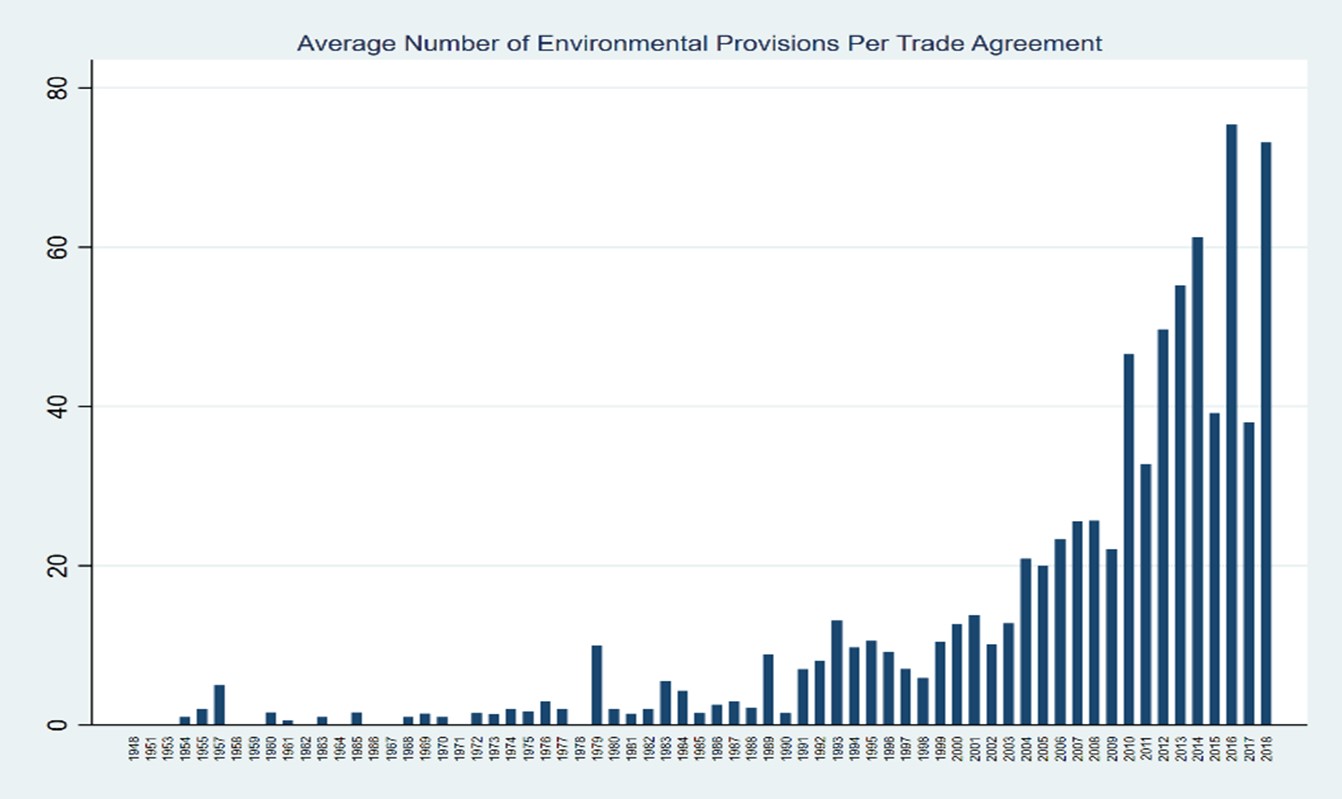
 14 December 2022
14 December 2022
Ruby Acquah and Mattia Di Ubaldo are Fellows of the UK Trade Policy Observatory and Research Fellows in Economics at the University of Sussex Business School. This blog was originally published by Trade 4 Sustainable Development.
The Role of Non-trade Provisions in PTA’s in Attaining the SDGs.
Preferential Trade Agreements (PTAs) are being increasingly used as a tool to pursue various non-trade policy objectives such as the protection of human rights and labour rights, the promotion of environmental sustainability, and combating climate change.
However, approaches to these non-trade policy provisions vary across different countries and range from a more cooperative strategy based mostly on dialogue (e.g., the EU’s approach in its Trade and Sustainable Development PTA chapters), to more binding and sanctionable provisions, e.g., in the case of PTAs of the US. In general, however, most of these provisions are weakly enforced, and non-compliance is hardly punished with sanctions. There might be no recourse to legal arbitration or sanctions outlined within the PTA or, in cases where some of these exist, implementation tends to be weak.
This raises the question of whether the inclusion of non-trade provisions in PTA’s has any effect on their intended outcomes and, if not, what remedies can be taken to ensure that they serve their (in principle) well-meaning purpose. We attempt to answer the first of these questions, by performing a rigorous empirical investigation of the effect of non-trade provisions in PTAs on non-trade outcomes.
More specifically, our on-going research on the effects of non-trade provisions in PTAs estimates the direct impact of specific environmental provisions in PTAs on environmental SDGs. PTA provisions related to the environment could, in fact, have direct implications for SDG 6 (Clean Water and Sanitation), SDG 7 (Affordable and Clean Energy), SDG 13 (Climate Action), SDG 14 (Life Below Water) and SDG 15 (Life on Land).
Data on Environmental Provisions in PTAs and SDGs
We combine data on environmental provisions in PTAs that were signed between 1948 and 2018 sourced from the Trade and Environment Database (TREND) by Morin et. al (2018), with data on SDG indicators sourced from the Food and Agricultural Organisation of the United Nations (FAO), World Bank’s World Development Indicators (WDI), and 2018 Environmental Protection Index (EPI).
Figure 1 depicts the number of PTAs signed between 1948 and 2018, while Figure 2 depicts the average number of environmental provisions per PTA over the same period. From Figure 1, we note that the inclusion of environmental provisions in PTAs is not a new occurrence. PTAs signed as far back as the 1950s featured some form of provisions on the environment. However, what stands out from Figure 2 is the rapid increase in the average number of environmental norms per PTA after the 1990s. Environmental provisions in PTAs have moved away from being general mentions of environmental concerns to becoming more detailed and focussing on specific environmental issues. This increased level of detail enables us to match the content of PTA with specific SDG indicators very closely. Guided by data availability (which is restricted mostly on the SDG indicators’ side) we have so far focused on four SDG indicators: SDG 6.4.2 (Water Stress), SDG 7.2.1 (Renewable Energy Share of Total Final Energy Consumption), SDG 13.2.2 (Total Greenhouse Gas Emissions), and SDG 14.4.1 (Proportion of Fish Stock within Sustainable Levels).
Preliminary Findings
We exploit a newly developed (synthetic) difference in difference estimator, that allows us to mitigate concerns of endogeneity in our specification (due to the non-randomness of the inclusion of environmental provisions in PTAs) and find heterogenous effects of the specific environmental provisions in PTAs on the SDG indicators that we consider.[1]
Most of the specific provisions show no statistically significant impacts on the related SDG indicators. Importantly, however, we find statistically significant impacts of provisions on total greenhouse gas emissions, renewable energy use, and the fish stock status. The most conservative results indicate that countries that sign PTAs including provisions aiming at reducing greenhouse gas emissions see a 0.2 percent reduction in their total greenhouse gas emissions, while having a provision on renewable energy production increased renewable energy use by 2.9 percent. Finally, the inclusion of provisions on combatting illegal fishing are found to reduce the percentage of a country’s total catch that comes from overexploited or collapsed stocks by 5.8 percent.
Figure 1

Source: Author’s computation based on TREND
Figure 2

Source: Author’s computation based on TREND
[1] We must flag that our research on this topic is still unfinished, hence the results mentioned here below can only be considered as preliminary.
Disclaimer:
This blog was originally published by Trade 4 Sustainable Development. Opinions expressed in this blog are those of the authors alone and do not necessarily represent the opinions of the University of Sussex, UK Trade Policy Observatory or Centre for Inclusive Trade Policy.
Republishing guidelines:
The UK Trade Policy Observatory believes in the free flow of information and encourages readers to cite our materials, providing due acknowledgement. For online use, this should be a link to the original resource on our website. We do not publish under a Creative Commons license. This means you CANNOT republish our articles online or in print for free.